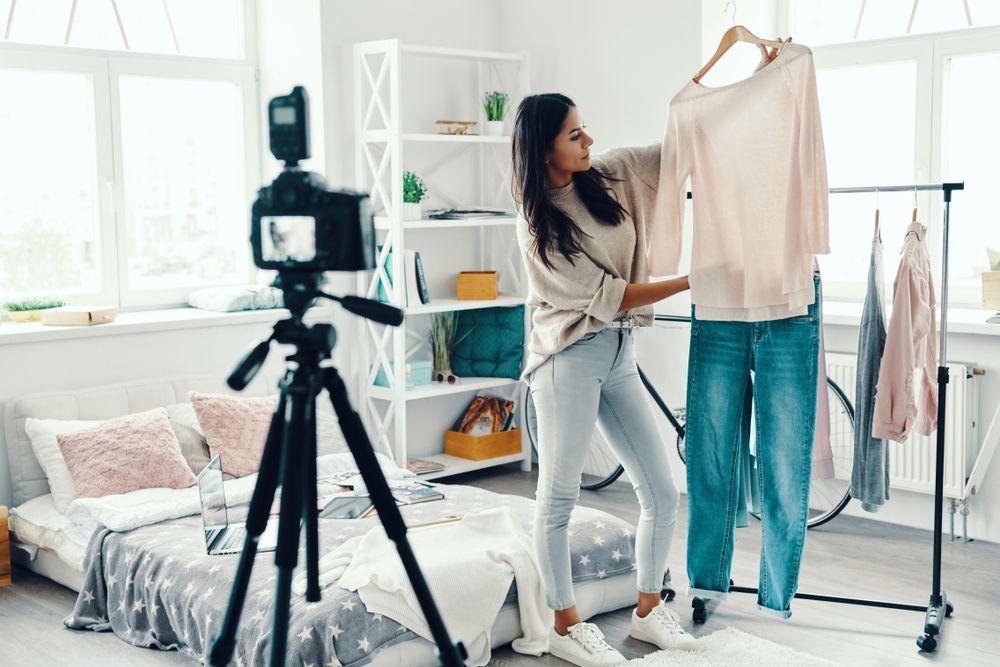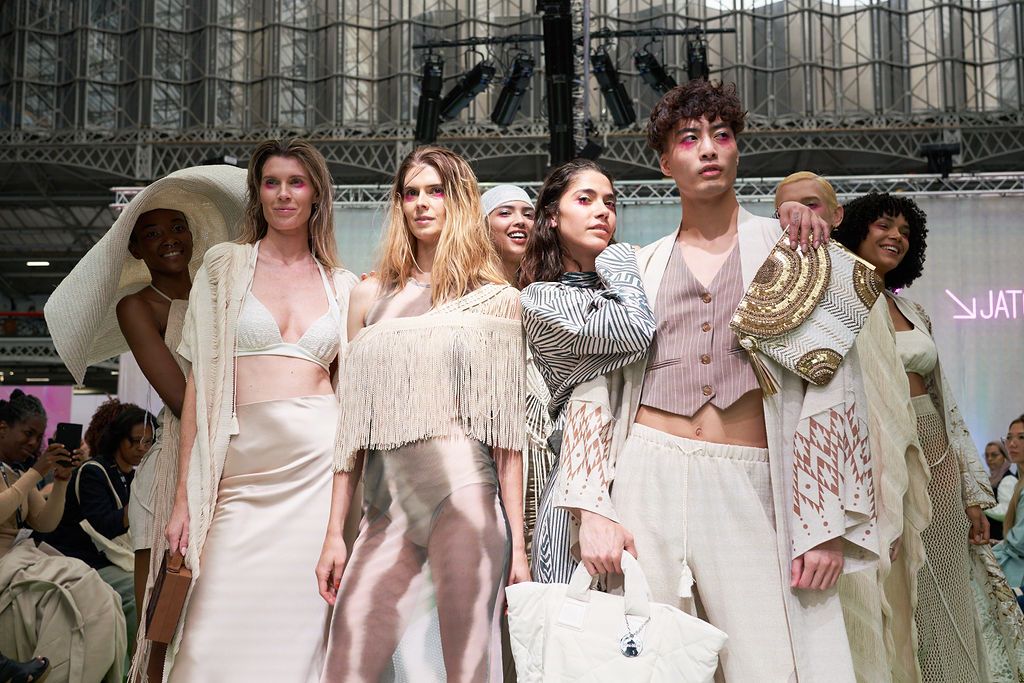Micro vs Macro Influencers: Who Has the Biggest Impact on Fashion?

The fashion industry has always thrived on trends, innovation, and evolving consumer behaviour. However, as we approach the new retail landscape predicted for 2025, it's clear that the role of influencers in shaping these trends is becoming more pivotal than ever. But when we look at micro versus macro influencers in fashion, who truly has the biggest impact?
In this article, we'll dive into how both micro and macro influencers shape retail trends, focusing on their distinct roles in the UK retail industry. We'll also explore how these two influencer categories will influence retail trends in 2025, shaping the future of fashion retail.
The Rise of Influencer Marketing in Fashion
Influencer marketing is no longer just a buzzword; it’s a key part of marketing strategies across the retail industry. Fashion brands have increasingly turned to influencers—individuals with significant social media followings—to reach consumers. Whether it's a mega-celebrity posting about a high-end designer gown or a niche fashion blogger showcasing sustainable streetwear, influencers can set trends and, more importantly, drive sales.
But not all influencers are created equal. To understand their role in shaping retail industry trends, it’s essential to differentiate between macro and micro influencers.
Micro vs Macro Influencers: Defining the Terms
Macro influencers are social media personalities with larger followings, typically ranging from 100,000 to several million. These could be celebrities, fashion models, or widely-recognised internet personalities. Macro influencers have a broad reach, often representing luxury brands or large-scale retail names, and are influential at a mass-market level.
Micro influencers, on the other hand, have more niche followings, usually between 1,000 and 100,000. While their reach may be smaller, their influence within a specific community is often more intimate and trusted. Micro influencers are more likely to collaborate with emerging brands, independent labels, or specialised niches like ethical fashion or vintage wear.
The debate between micro and macro influencers in fashion revolves around one major question: Is it better to have broader reach or deeper engagement? Both offer distinct advantages, but their roles in the retail industry trends for 2025 are nuanced.

Macro Influencers: Reach and Visibility
Macro influencers dominate the larger share of mainstream fashion marketing. Their primary advantage lies in their ability to expose brands to millions of followers instantly. Fashion brands looking for immediate visibility often turn to macro influencers, especially for new launches or limited-edition collections.
Their influence is significant in luxury fashion, where exclusivity and prestige drive consumer behaviour. For example, a single Instagram post by a high-profile celebrity can lead to widespread coverage in fashion media and online platforms. This is ideal for brands looking to elevate their global image and reach consumers across multiple markets.
However, while macro influencers offer mass visibility, they may lack the deep, personal connection that micro influencers share with their followers. The larger the following, the more generalised their content becomes, and this can dilute engagement. As a result, consumers might view macro influencer collaborations as more transactional, particularly in an era where consumers are becoming more discerning about authenticity.
Micro Influencers: Niche and Engagement
Micro influencers, by contrast, build their reputation on authenticity and community. With smaller, more specialised followings, they are able to engage deeply with their audience. Whether it's promoting local independent boutiques or discussing sustainability in fashion, micro influencers tend to foster greater trust and engagement with their followers.
A key retail trend emerging as we approach 2025 is the growing consumer demand for personalised and authentic experiences. UK retail trends, in particular, show an increasing desire for transparency in the fashion industry, from ethical sourcing to sustainability initiatives. Micro influencers, with their more relatable personas and real-time interactions, align perfectly with these emerging retail trends.
Brands that partner with micro influencers often find that their campaigns result in higher engagement rates. Consumers see micro influencers as genuine voices who provide authentic product recommendations, creating a sense of community and shared values. In the world of fashion, where trends can feel impersonal, micro influencers bring a human touch that resonates deeply with today’s increasingly savvy shoppers.
What’s the Real Impact?
Deciding whether to work with macro or micro influencers ultimately depends on a fashion brand's goals, target audience, and available budget. But beyond these practical considerations, brands should also think about impact—not just in terms of reach, but in how their message is received and acted upon.
1. Awareness vs. Conversion
Macro influencers are excellent for driving brand awareness. Their vast audiences can create a buzz around new products, partnerships, or collections. However, in terms of driving tangible results like sales conversions, micro influencers may have the upper hand. Their more engaged audiences often respond better to personalised recommendations and are more likely to act on these suggestions.
For example, a micro influencer specialising in vintage fashion might share their favourite pieces from a smaller brand, generating genuine interest from their followers, who trust their opinion. This level of influence often leads to higher purchase intent, even if the total audience is smaller.
2. Longevity vs. Hype
Macro influencer campaigns can feel like a quick burst of energy—a huge initial spike in engagement followed by a rapid drop-off. While these campaigns can be successful for product launches or one-off promotions, they may not build sustained brand loyalty. On the other hand, micro influencers can foster long-term relationships between a brand and its audience. Their content feels more organic, and ongoing collaborations allow for deeper storytelling, which builds brand affinity over time.
Brands that work with micro influencers often see their products integrated into everyday content, making them a natural part of the influencer’s lifestyle. This sense of authenticity can be far more impactful in building lasting consumer relationships.
3. Trust and Credibility
In a world where consumers are increasingly savvy about influencer marketing, trust is everything. This is where micro influencers excel. Because they are perceived as being more “real” and connected with their followers, they can be highly persuasive. Macro influencers, particularly those who frequently collaborate with multiple brands, can sometimes risk diluting their credibility. When every post is a paid advertisement, it becomes harder for audiences to trust the authenticity of their endorsements.

The Final Verdict: Who Has the Biggest Impact On The Industry?
Ultimately, the question of whether micro or macro influencers have the biggest impact on the fashion industry doesn't have a one-size-fits-all answer. Both types of influencers have distinct roles to play, and their effectiveness depends on a brand’s goals, target audience, and the specific retail trends they are aiming to align with.
Macro influencers bring the power of reach, making them ideal for mass-market campaigns and global brand visibility. They are perfect for large-scale product launches, particularly for luxury fashion brands that thrive on prestige and exclusivity.
Micro influencers, however, offer depth and engagement. Their authenticity, trust, and niche appeal make them well-suited for driving meaningful conversations around emerging retail trends like sustainability, ethical fashion, and personalisation.
As the fashion industry shifts towards a more consumer-centric model, the role of micro influencers will only grow in significance, particularly in the UK retail trends forecasted for 2025. According to Influencer Marketing Hub, brands show a clear preference for collaborating with smaller influencers, with 44% opting for nano influencers and 26% choosing micro influencers, compared to just 17% for macro influencers and 13% for celebrities, who tend to be more costly.
In the future of fashion retail, both macro and micro influencers will continue to shape trends in unique and complementary ways. However, with the rise of personalisation, sustainability, and technology-driven retail experiences, it’s likely that micro influencers will hold increasing sway over how consumers interact with brands and make purchasing decisions.
Do you have valuable insights, tips, or trend forecasts to share? We’re looking for talented guest contributors to write for Pure London x JATC!
Whether you're a fashion buyer, stylist, trend expert, or retail strategist, this is your chance to share your knowledge and be featured.
Ready to contribute? Submit your article ideas today and get the opportunity to showcase your expertise to a wide, engaged audience!
Articles You May Be Interested In
Top Consumer Fashion Trends for 2025
Why Retailers Should Invest In The Resale Market
Sustainable Product Returns: Minimising Waste and Maximising Value
